|
Monocacy Page3 Photos/text this page courtesy of Craig Swain, Leesburg, VA For any use of these photos contact Webmaster |
||
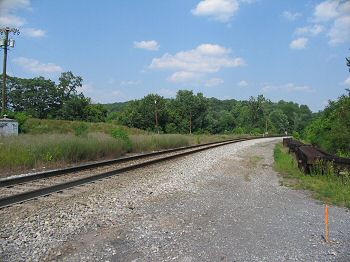 |
 |
|
|
(July 2007) Monocacy Junction. The Federal lines on the west of the Monocacy River formed around the simple railroad station which stood on the south side of the junction's triangle (to the right where the railroad ties are stacked). The last Confederate attack in this sector landed around 3: 30p.m. between this point and the spot where Georgetown Pike crossed the railroad. The attack broke the back of the mixed detachments defending here |
(July 2007) Lieutenant Davis's retreat. Confederate forces under General Robert D. Johnston first probed Federal lines here at around 11:00 a.m. but were repulsed with the help of Federal batteries stationed across the river to the east. Later in the afternoon, Lieutenant George Davis' detachment from the 10th Vermont retreated across the bridge here. Davis would receive the Medal of Honor for his role in defense of the Junction. On the far side, a Federal blockhouse defended the railroad bridge. In addition, guns from Alexander's Baltimore Artillery supported from the east bank |
|
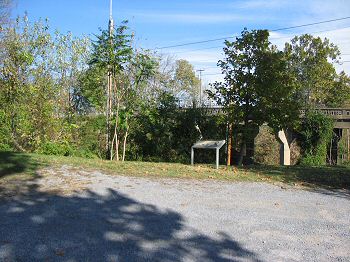 |
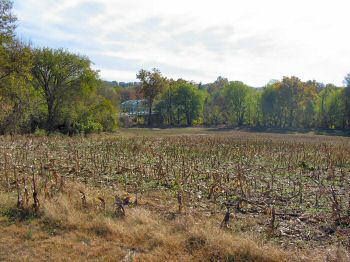 |
|
|
(November 2007) At the time of the battle, the Georgetown Pike crossed the railroad by a wooden overpass near the modern concrete structure |
(November 2007) Location of the Wooden Bridge over the Monocacy. A covered wooden bridge stood near where the modern truss bridge crosses over the Monocacy. The wartime structure was recorded as 250 feet long and 50 feet wide. Around noon on the day of the battle, General Lew Wallace ordered the wooden bridge burned (and the nearby blockhouse with it) in order to seal off any Confederate advance from this sector. This would allow Federals to reposition forces holding the east side of the bridges to orient south towards the more pressing threats. However, that also isolated some 300 Federal skirmishers still engaged to the west of the river |
|
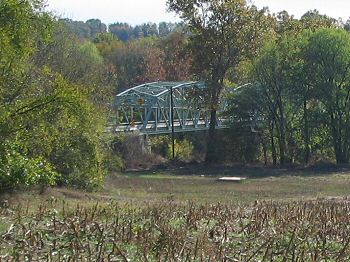 |
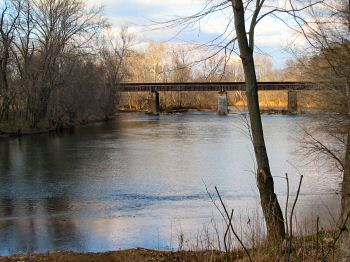 |
|
|
(November 2007) Close-up of the Wooden Bridge site |
(July 2007) View of the railroad bridge from the east bank. The wartime bridge was a double track iron bridge, and was not simple to destroy during the heat of battle. The spacing of railroad ties precluded rapid movement across the span, thus making it easier to defend from the east bank. However, this also made Lt. Davis' retreat all that more difficult in the afternoon of the battle |